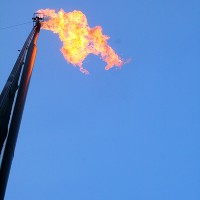New cross-cutting research on unconventional gas
In collaboration with the ENE and MAG programs, TNT aims to explore the implications of the potential abundance of unconventional gas resources, particularly the technological, local air pollution, and climate impacts of their expanded use.
The potential for unconventional gas has recently been attracting greater attention due to the “shale gas boom” in North America. This research can build most usefully on past collaborative research between TNT and ENE in assessing the potential of methane hydrates [1].
Using existing models and in cooperation with IIASA research networks, a multi-model scenario comparison was conducted to assess the potential climate effects of expanded gas use. The results were prominently published in Nature [2].
The results confirm the importance of system-wide effects with enhanced availability of new gas sources. While such availability would enable displacement of carbon-intensive technology options (such as coal-based electricity generation) this would, in turn, displace the further diffusion of new renewable technologies.
The climate effects of enhanced reliability on natural gas thus range from ambiguous to insignificant. It was found that only under radical systemic changes—not explored in the modeling intercomparison—could greater reliance on natural gas enable a transition to a low-carbon future yielding significant climate benefits. The exploration of such technological systemic options rather than a combination of (unrelated) individual options could be a potential niche for IIASA for further exploration in 2015. TNT’s inputs to this Institute-wide project are coordinated by Nebojsa Nakicenovic and Holger Rogner.
References
[1] Krey V, Canadell JG, Nakicenovic N, Abe Y, Andruleit H, Archer D, Grubler A, Hamilton NTM, Johnson A, Kostov V,Lamarque J-F, Langhorne N, Nisbet EG, O'Neill BC, Riahi K, Riedel M, Wang W, Yakushev V (2009). Gas hydrates: Entrance to a methane age or climate threat? Environmental Research Letters, 4(3):034007.
[2] McJeon H, Edmonds J, Bauer N, Clarke L, Fisher B,Flannery BP, Hilaire J, Krey V, Marangoni G, Mi R, Riahi K,Rogner H-H, Tavoni M (2014). Limited impact on decadal-scale climate change from increased use of natural gas. Nature, 514(7523):482-485.

Research program


